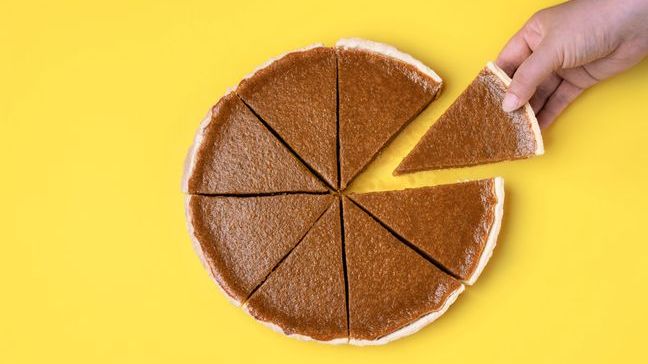With several high-profile stock splits coming up in 2022, including Google, Amazon, and Shopify, I’ve been reading a lot of misinformation lately about what stock splits are, how they work, and what opportunities they open up for investors.
I even saw TikTok claim that we should expect Google to double this year thanks to the July 15th split.
I mean, maybe – it’s fucking Google – but not because of the split. Splits just don’t work that way.
So let’s clear things up and start from the beginning.
- What is a stock split?
- Why do companies make them?
- What usually happens to the value of a company after a split?
- Should you invest right before a stock split?
Let’s dive in!
What is a stock split?
A stock split is when a company “splits” each of its existing shares into two, three, or sometimes even 20 shares without affecting its market capitalization. The main goal is to make each stock more accessible to the average investor.
For example, suppose Bluth has 10 million shares outstanding and each share is trading at $1,000. This is a $10 billion market cap.
When your company’s stock price reaches $1,000 a share. | Source: Tenor.com
In addition, Bluth Company is expected to continue its healthy growth pattern, which will drive the share price even higher.
While high stock prices are usually an indicator of good performance, they actually create problems for both the company and its investors.
- Retailers cannot afford them.
- Fund managers are forced to buy shares at a restrictive price in multiples of $1,000.
- Even investors who can afford it don’t like to pay $3,000 for three measly shares.
Simply put, high stock prices are clumsy and clumsy, and investors generally don’t like them.
So CEO George Bluth Sr. could propose a 20 to 1 stock split. This would bring the price of each share down to $50, making it easier to buy, trade, etc.
So how does a stock split actually work?
How does a stock split work?
A stock split begins when a publicly traded company realizes that its share price is likely to be too high.

Source: Giphy.com
At this point, the board of directors of the company votes:
- Whether to make a division; as well as
- What division factor to use.
The most common split ratios are 2 to 1 and 3 to 1, although 10 to 1 and even 20 to 1 are not uncommon, especially for large companies with high stock prices.
For example, on June 6, 2022, Amazon held its first stock split in 23 years, a 20-to-1 stock split that dropped the stock price from about $2,447 to $122. Walmart (WMT) has run nine splits since 1975.
In this regard, stock splits are quite common. Since the beginning of 2022, there have been between 20 and 30 stock splits per month, according to Fidelity.
If they are so common, are there other incentives for companies to apply?
Why do companies do stock splits?
1. Make stock prices more affordable
As mentioned, no. One reason companies do stock splits is to make stock prices more affordable. Cheaper stocks mean people can buy more, trade more, and invest more.
The increase in trading activity caused by more affordable stocks results in zero profit. 2:
2. Increase turnover and liquidity
Liquidity is how quickly and easily shares can be bought and sold without too much impact on the overall price of the shares.
Float is the number of shares available on the open market at a given time – so to speak, “available stock”.
High liquidity and a large number of shares are key indicators of a healthy stock. Pair together like motor oil in an engine. And when you do a stock split, your reserve doubles and liquidity increases significantly, effectively oiling the stock.
3. Like a flex/humble bouncer
Finally, a stock split can generate hype and free press about your company and its good performance. It’s a bit like a company that bends so hard that it pulls out of a T-shirt.

Source: Giphy.com
The company then goes into action in their best Arnold voice: “Oh no, I got too big and strong. Better buy new clothes/stock split.”
Modest bragging rights and a free press can help attract new investors, but again, the main motive behind a stock split is to make stock prices more affordable.
But wait a second. What’s the point if fractional stocks already exist?
Now that many brokerages offer the option to buy fractional stocks, is a stock split really necessary? Why should I wait for Google’s stock split when I can just buy 0.08 shares of Robinhood right now?
Well, according to Varun Marneni, advisor to CPC Advisors and Raymond James Financial Services in Atlanta, fractional stocks have a few hidden downsides:
1. Liquidity
Not all brokers want your fractional shares. If Robinhood has nine traders trying to sell 0.1 shares of Amazon, they may have to wait until one more makes a whole share that another brokerage company buys.
2. Employee incentives
Companies like to reward employees with whole shares as a reward, and stock splits make this easier.
3. Investor psychology
Many seasoned and institutional investors don’t want to have half of Amazon’s stock in their portfolio – they’d rather have a good, clean, whole 10 stocks.
So while fractional stocks are certainly convenient, they don’t take away the motivation and benefits of a true stock split.
In short, you will wake up with more shares but the same amount of capital invested.
Let’s say you have 1.63 GOOGL shares. On July 15th, Google will issue you more shares to increase your total number of shares by exactly 20. So that’s 32.6 shares.
Stocks don’t literally fall apart like amoebas, although that would be cool.
Oh, and your individual stocks lose 95% of their value. Instead of 1.63 shares worth $2,230 each, you’ll have 32.6 shares worth $111.50 each.
Finally, the big question is: how do you make money during a stock split?
Should you invest in a company right before a stock split?
Let’s dive head first into this myth that disk performance is declining. Is TikTok’s “finfluencer” intro correct? Can we really expect Google to double in size after splitting this year?

Source: Giphy.com
Stock splits do not automatically skyrocket stock prices. In fact, in most cases they have little to no effect on performance.
Schaeffer’s study, which analyzed 240 splits over 10 years, found that more than 50% of the time, stocks actually underperformed the S&P 500 within six months of the split.
“The stock split doesn’t seem to make much of a difference to their future performance.”
A Reuters study by BofA Securities found that when stocks do outperform markets after a split, it’s not because of the split. Rather, the opposite is true—the company’s existing performance led to the split in the first place.
“The companies that have announced the split are likely to have demonstrated sustained market dominance and expect this dominance to continue.”
This may come as a surprise. I mean, if the whole point of a split is to make it easier to trade stocks, then why doesn’t the split turn into a buying frenzy that pushes prices up?
Stock splits have surprisingly little impact on performance
Splitting shares is like cutting a cake into smaller pieces.

Source: Giphy.com
The cake will not expand.
It doesn’t improve the taste of the cake.
It might have attracted one or two people who didn’t want a big piece. But ever since these people started cutting themselves into pieces, the queue of people waiting for a small piece has almost disappeared.
That’s why stock splits don’t have a direct impact on performance. Investors are either bullish or bearish about stock splits, and they tend to balance each other out.
bottom line
With all that said, if you see someone cutting a cake into 20 tiny pieces, that could be a sign that it’s a damn good cake. This may be a sign that many people like this cake and its popularity is on the rise.
So the actionable conclusion is that stocks that get split are not easy, automatically win, but are worth studying.
if you are are Looking for an easy win and a high probability of a long-term return, move on to the next section: Why Index Funds Cost Less, Reduce Risk, and Make You a Better Investor.
Featured Image: YesPhotographers/Shutterstock.com


